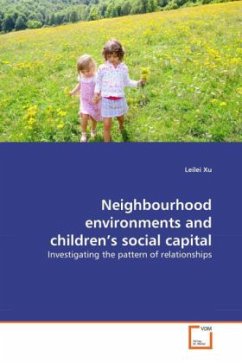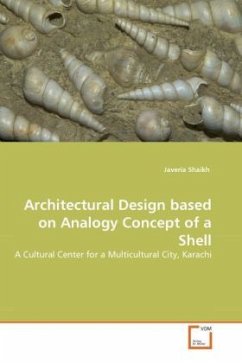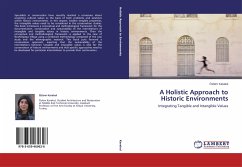
Multiagent-Based Intelligent Environments
Collaborative Design as a Framework
Versandkostenfrei!
Versandfertig in 6-10 Tagen
32,99 €
inkl. MwSt.

PAYBACK Punkte
16 °P sammeln!
Intelligent Environments can respond to the changing needs of their users, activities, and contexts by automatically adjust key environmental parameters. However, most of attempts focus on the technical aspects of physical artifacts instead of the dynamic interrelationship between the user and the built environment. Consequently, environmental conflicts among users, activities, and physical settings are not completely resolved. This study engages environmental design concepts to theorize a framework and propose a more comprehensive model for building Intelligent Environments. In contrast to th...
Intelligent Environments can respond to the changing
needs of their users, activities, and contexts by
automatically adjust key environmental parameters.
However, most of attempts focus on the technical
aspects of physical artifacts instead of the dynamic
interrelationship between the user and the built
environment. Consequently, environmental conflicts
among users, activities, and physical settings
are not completely resolved. This study engages
environmental design concepts to theorize a
framework and propose a more comprehensive model for
building Intelligent Environments. In contrast to
the current approach based on systems theory, the
method here looks to collaborative design. The
proposed model is developed as a team-type
organization of multiple intelligent agents that can
sense immediate changes in its domain of
responsibility and propose corrective measures by
negotiating with other agents to form a collective
response. The theory and framework presented in this
study should be useful to those who have an interest
in the application of computing to the environmental
design fields, including architecture and interior
design.
needs of their users, activities, and contexts by
automatically adjust key environmental parameters.
However, most of attempts focus on the technical
aspects of physical artifacts instead of the dynamic
interrelationship between the user and the built
environment. Consequently, environmental conflicts
among users, activities, and physical settings
are not completely resolved. This study engages
environmental design concepts to theorize a
framework and propose a more comprehensive model for
building Intelligent Environments. In contrast to
the current approach based on systems theory, the
method here looks to collaborative design. The
proposed model is developed as a team-type
organization of multiple intelligent agents that can
sense immediate changes in its domain of
responsibility and propose corrective measures by
negotiating with other agents to form a collective
response. The theory and framework presented in this
study should be useful to those who have an interest
in the application of computing to the environmental
design fields, including architecture and interior
design.












